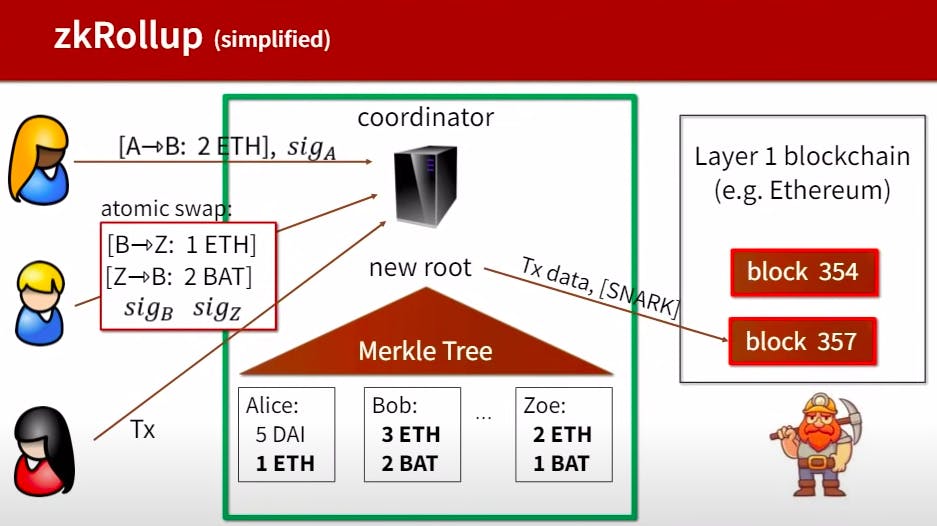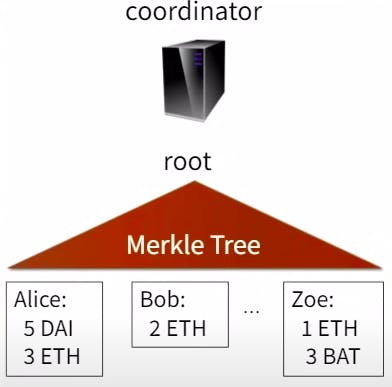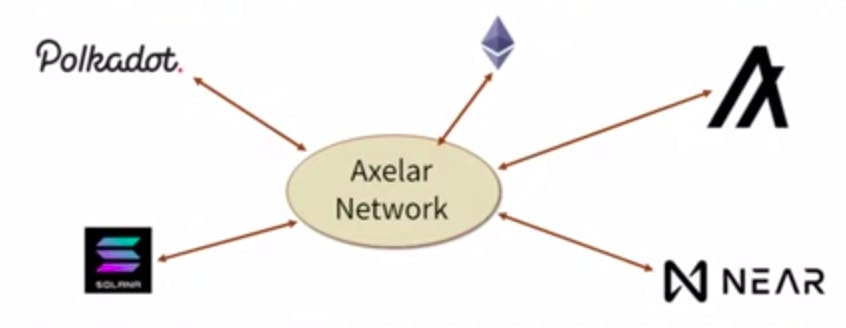Scalability and Interoperability in Blockchain
Scalability, Interoperability the two hot topics in Blockchain Research and are rapidly growing topics with a lot of research and development potential.
Scalability: The goal of scalability is to increase transaction speed (faster finality), and transaction throughput (high transactions per second), without sacrificing decentralization or security.
Current Transaction rates in Bitcoin and Ethereum and
BItcoin -> 5-10 Tx/sec
Ethereum -> 20 (Tx/sec) ( the actual number can vary based on network congestion, other factors and Transaction fee between $2 to $60 for a simple transaction)
In the current scenario VISA network process up to 35,000 (Tx/sec)
So How can we scale the blockchain network? with a low Transaction fee ?
Faster consensus : Modern blockchain makes it possible (eg: Solana,Flow, ...)
Payment channels : Most Transactions are offchain Peer-to-peer (eg.., Lightening protocol)(Lightning is a decentralized network using smart contract functionality in the blockchain to enable instant payments across a network of participants.)
Layer 2 Approaches : Zk Rollup , optimistic Rollup : where it batch many txns into a Single Transaction
Types of Rollup : ZK and optimistic

Purpose of Rollup coordinator: Transactions will be sent to the Rollup coordinator and the Rollup coordinator batch all the transactions into a single Rollup update block (Verify all Txn creates a short Proof) using SNARK(Succinct non-interactive argument) which allows creating an efficient short proof saying that all transactions are valid ad verifying that proof is also simple.
Zero-knowledge rollups run computation off-chain and submit a validity proof to the chain
eg: 1000 Txn's compressed into a single commitment and provide proof that commitment represents a valid set of transactions and anyone can easily verify those transactions are correct and this proof will be sent to the blockchain along with the summary of transactions, Now what the validators or miners will do is rather than verify their transactions themselves and they verify the proof
As verifying the proof is much easier than verifying the transactions and it saves so much space on the blockchain, As the transaction summary does not include any digital signatures, because signatures are big chunks of transaction data, All that will be removed and what actually gets stored on the blockchain is proof and summary of transaction without digital signatures

L1/L2 interoperability
Optimistic rollups are designed for interoperability with Ethereum Mainnet and allow users to pass messages and arbitrary data between L1 and L2

COORDINATOR: basically compresses a Thousand Tx in to a single on-chain proof(SNARK)
Optimistic Rollup: In optimistic rollups, batches of transaction data are posted to the main chain and presumed to be valid by default (hence the name optimistic) but can be challenged by other users
In this there is no proof, instead, there is mechanism by which anyone can complain that an update message from the coordinator was invalid and then things get rolled back
Theoretically, anyone can challenge them by submitting a claim, also known as fraud proof, to prove that a batch committed to the chain contained invalid state transitions. If the fraud proof is valid, these invalid state transitions would be rolled back. If nobody challenges the transaction, it will be committed to the main chain. To give users enough time to challenge transactions, there is a long wait time between a transaction being posted to it being committed on the main chain, typically a few days but as long as a week. During this time, you cannot withdraw your funds to the main chain.
INTEROPERABILITY :
Blockchain interoperability refers to the ability of blockchains to communicate with other blockchains i.e., The abiiity to share information across blockchain networks
why do we need it ?
Blockchain and DLT platforms are exploding by the day, Interconnecting these new chains are becoming essential as different networks and blockchains are designed for specific use cases and different protocols
That is the reason for the ability to communicate over blockchains hence the interoperability problem needs to be solved
Eg: A user owns founds or assets on blockchain system , with interopalbilty enable the user to move funds and/assets to another system
Enable a DAPP on one blockchain to call a DAPP on another
Eg: Axelar delivers secure cross-chain communication for Web3. Our infrastructure enables dApp users to interact with any asset or application, on any chain ,

So that Ethereum smartcontact can make a call to smartcontract on solana
The problem can also be solved by correct use of bridges and brodging network like this.
Cross-chain dApps differ from multi-chain dApps in that a multi-chain dApp often deploys the same application on multiple blockchains, but each instance is an isolated set of smart contracts with no connection to other blockchains.
Most popular cross-chain interactions. BRIDGES
As the number of blockchains protocols increases, so does the demand to move assets across chains. To fulfill this demand, *we need bridges.*Approaches :
Token swaps involve trading a token on a source chain and receiving a different token on a destination chain. Cross-chain token swaps are generally made possible by atomic swap protocols and/or cross-chain automated market makers (AMMs), which have separate liquidity pools on each blockchain to facilitate the swap.
Token bridges involve locking or burning tokens via a smart contract on a source chain and unlocking or minting tokens via a separate smart contract on the destination chain. Token bridges allow assets to be moved across blockchains, increasing token utility by making cross-chain liquidity possible.